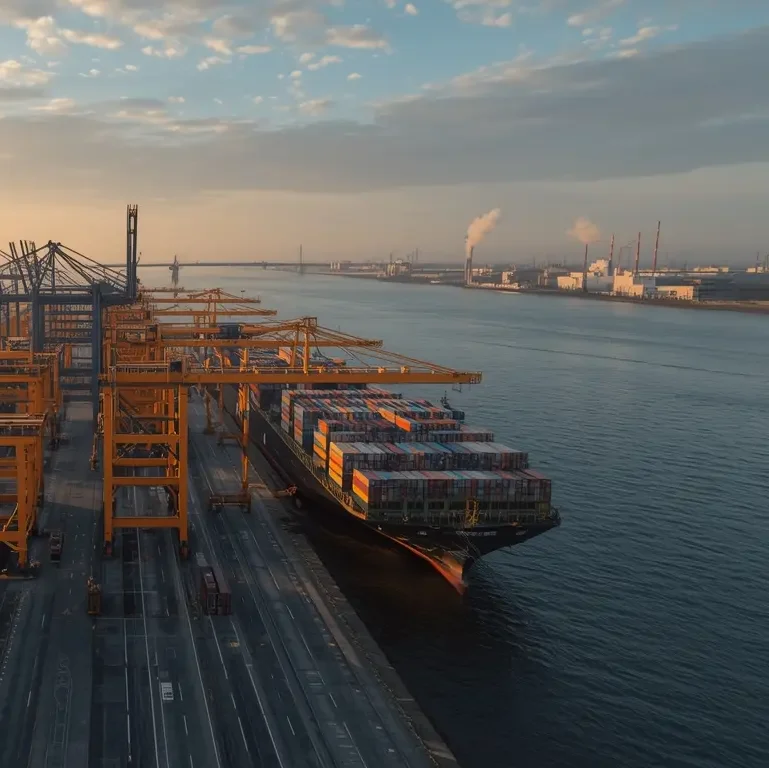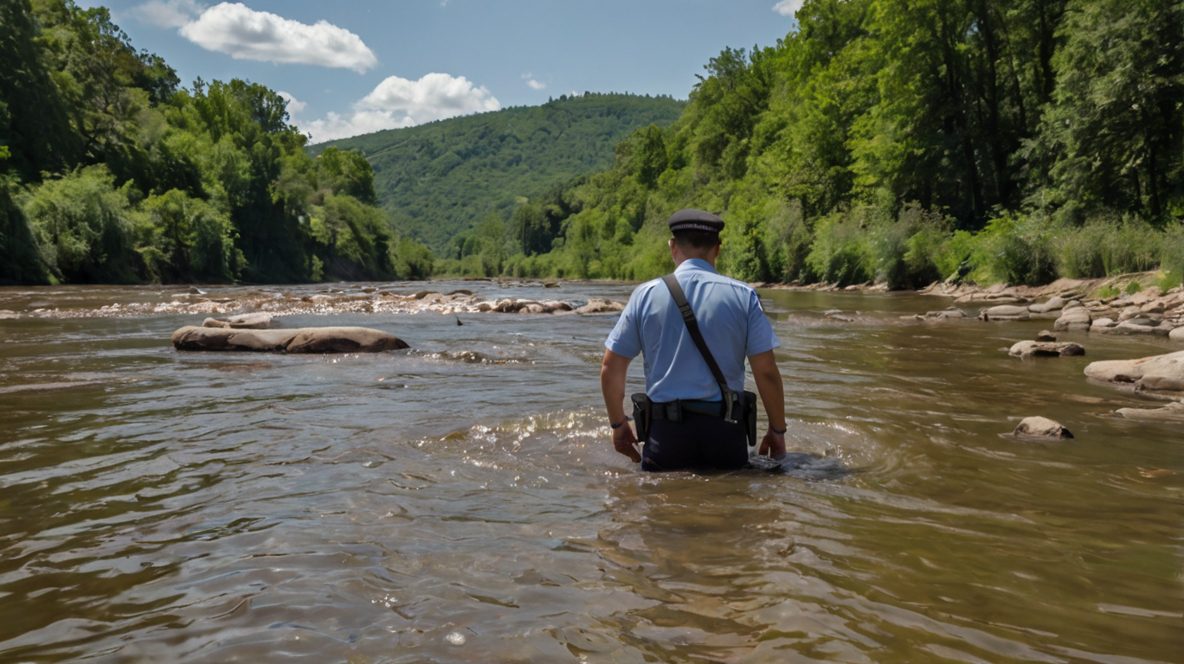A Toxic Grenade? Tradepoint’s New Shipping Terminal Sparks Community Concern
The construction of Tradepoint Atlantic’s new container terminal in Sparrows Point is stirring a mix of excitement and worry. While supporters hail it as a game-changer that will solidify the Port of Baltimore as a leading East Coast port and bring thousands of jobs and billions in investment, many residents living nearby are sounding the alarm. They warn the project could act like a “toxic grenade,” threatening decades of environmental restoration and local community wellbeing.
What Is Driving the Concern Over This “Toxic Grenade”?
Residents such as Mary Taylor, a lifelong Essex area native and environmental advocate, fear the project could undo years of hard-fought progress in restoring the Patapsco River and the Upper Chesapeake Bay. Taylor, alongside others, believes the terminal and its associated dredging activities might release harmful contaminants buried beneath the site — effectively turning the area into a “toxic grenade” that could detonate ecological harm.
“This project is going to destroy this community. It’s going to destroy our Chesapeake Bay,” Taylor says passionately.
This sentiment is echoed by Keith Taylor, president of the Sparrows Point North Point Historical Society, who warns of a potential environmental disaster likened to a “toxic grenade.” He points to past incidents like the fish kill at the Inner Harbor as examples of what could happen if dredging is not handled properly.
The Project Overview: Economic Boom vs Environmental Risk
Tradepoint Atlantic plans to develop a 330-acre state-of-the-art container terminal that promises to bring approximately 1,100 new jobs and billions of dollars in economic investment to Baltimore. The project has already cleared key regulatory hurdles, including the issuance of a license in September after years of scientific studies, public consultations, and agency reviews.
Yet, concerns linger about the dredging methods. Residents advocate for hydraulic dredging, a technique they believe is safer, while the state has ruled this method out, favoring mechanical dredging instead.
The worry is that disturbing the old steelmaking industrial waste buried beneath Sparrows Point without appropriate safeguards could be tantamount to detonating a “toxic grenade” — releasing pollutants into the water and air that would harm marine life and the community’s health.
Agencies and Tradepoint’s Stance: A Thorough and Transparent Process
Government bodies and Tradepoint Atlantic maintain that the project has been thoroughly studied and vetted. According to the Maryland Department of the Environment (MDE), the choice to avoid hydraulic dredging was backed by extensive evaluation, and mechanical dredging with an environmental bucket has been shown effective in controlling sediment disturbance.
The U.S. Army Corps of Engineers published the Final Environmental Impact Statement after a comprehensive multi-agency review, concluding that the plans incorporate safeguards for the waterways.
In a statement, Tradepoint Atlantic emphasized their commitment:
“We have been extremely transparent and communicative since this project’s announcement and have worked diligently with stakeholders to address all issues… The project safeguards our waterways and environment using approved dredging practices.”
Despite this, community members like Russell Donnelly from Southeast Communities Against Pollution insist their independent testing shows significant risks remain — and once the damage is done, it cannot be reversed.
Why Do Residents Call It a “Toxic Grenade”?
The phrase “toxic grenade” has become a rallying cry for local activists concerned about the environmental and health risks tied to disturbing decades of industrial waste. This metaphor reflects the fear that the dredging process could:
- Release harmful chemicals and heavy metals into the waterway
- Damage the fragile ecosystems of the Chesapeake Bay
- Affect fish populations and local wildlife
- Undermine years of restoration efforts by community members
- Impact public health and quality of life for nearby residents
With the project poised to start construction before the year’s end, residents are intensifying calls for greater scrutiny and alternative approaches to avoid triggering this environmental “toxic grenade.”
The Economic Promise: Balancing Growth and Protection
Supporters argue that the terminal will deliver much-needed economic revitalization to the area. Don Mohler of the Sparrows Point Alliance highlights the job creation aspect:
“Tradepoint has delivered on every promise and will do so again. I can’t wait to bring 1,100 new jobs to Sparrows Point.”
The challenge remains to balance this economic growth with environmental protection. The authorities affirm that multiple environmental safeguards are in place, including over 20 special conditions on the license issued by the Maryland Board of Public Works.
What’s Next for Sparrows Point and the Community?
Construction is set to begin soon, with dredging expected to continue for about three years. As the project moves forward, residents vow to stay vigilant, hoping to prevent the “toxic grenade” scenario they fear.
Public participation remains open, and officials stress the importance of ongoing community engagement in monitoring the project’s environmental impact.
Key Takeaways: Understanding the “Toxic Grenade” Debate
- “Toxic grenade” is a term used by residents to describe the potential environmental threat from dredging old industrial waste.
- Tradepoint Atlantic’s terminal aims to boost Baltimore’s economy with new jobs and investment.
- Mechanical dredging, not hydraulic, is planned and is claimed to be safer by regulatory agencies.
- Independent community testing suggests risks remain despite official studies.
- The project has undergone multi-year, multi-agency environmental reviews and public hearings.
- Residents want their concerns to be heard and to explore safer dredging alternatives.

Conclusion: The Critical Crossroads for Tradepoint and Sparrows Point
Tradepoint Atlantic’s new shipping terminal is a project of significant importance to Baltimore’s future, promising economic benefits and enhanced port capabilities. Yet, the use of the term “toxic grenade” by local residents underscores the deep-seated concerns about the potential environmental consequences.
Moving forward, the key to success lies in transparent, continuous dialogue between the developers, regulatory agencies, and community members — ensuring that growth does not come at the expense of environmental health.
As the construction timeline approaches, the debate around this “toxic grenade” will continue shaping the narrative of Sparrows Point’s redevelopment and the broader Chesapeake Bay ecosystem.
Refference Website: https://www.wbaltv.com/article/residents-concerned-construction-tradepoint-shipping-terminal/68064633
Read More Article 24hourbulletin.com



